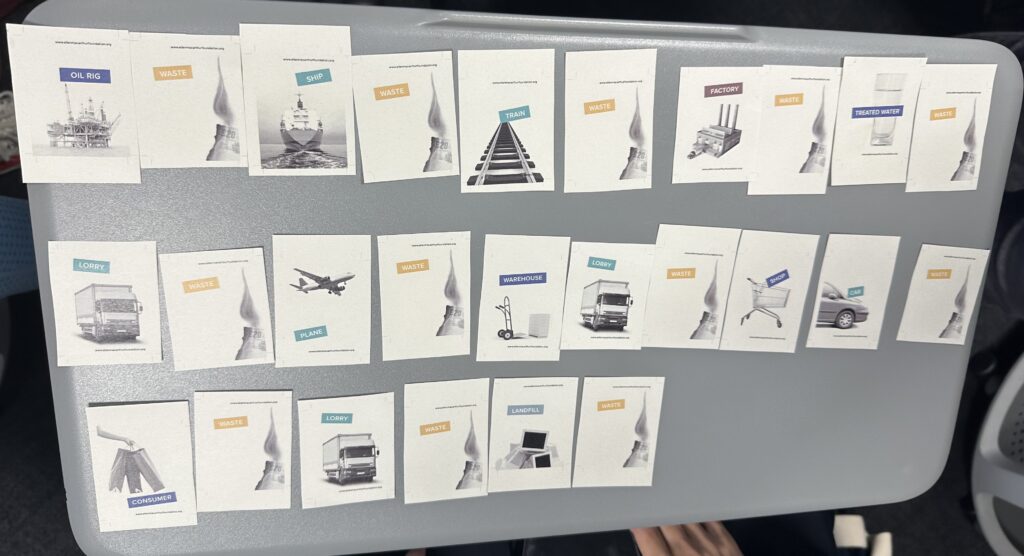Week-5
In the fifth week, I read the book “Cradle to Cradle”, from which I learned that at the end of today’s industrial design system, some products are not effectively reused, and it becomes a one-way cradle-to-grave model, a fundamental flaw in design itself that began with the Industrial Revolution.
Cradle to Cradle(C2C) for Design is not just about reducing waste, but about converting waste into other useful recycled materials or product. As designers, we should integrate ecological design into the product so that the entire life cycle of the product is sustainable (3R principle), and break the traditional production model, and improve energy efficiency and resource utilization in the production process.
Since then, at the workshop this week, we did a redesign about the coffee cups in train stations, we discussed about We the issue of paper tickets in train stations and proposed that the tickets be recycled and roughly processed into paper pulp and designed into a paper coffee cup for use at the station.

It was a really interesting idea for the workshop, and paper is one of the most recycled products in the world. But for me as an product design base student, I still think there are so much to improve.
First, The step of collecting tickets into pulp cannot be completed at the station. This requires collecting and transporting them to the factory. Does the transportation process also consume energy and generate waste? (In our previous Circular card activities, we placed lorry followed by waste cards at each production link), which means that transportation will inevitably generate waste.

Secondly, although paper is one of the materials with the highest recycling rate, it will also have a considerable impact during its production process. Papermaking and pulping processes require a large amount of water and also produce chemicals such as benzene that can pollute water bodies such as formaldehyde, chloride, etc.
And last, the papermaking industry requires a large amount of energy supply, burns fossil fuels and produces a large amount of harmful gases, causing pollution, and the hot pressing technology that is indispensable in the paper cups we design will also produce carbon emissions.
Despite this, I still think this is a very meaningful workshop that makes me think. It also makes me realize that there are still many problems that need to be solved in the modern
production model.
Reference
Braungart, M. and McDonough, W. (2019) Cradle to cradle: Remaking the way we make things. London.
AllroundWeb (2023) Paper sustainability: Is paper eco friendly?, PaperWise. Available at: https://paperwise.eu/en/paper-sustainability/ (Accessed: 25 October 2023).